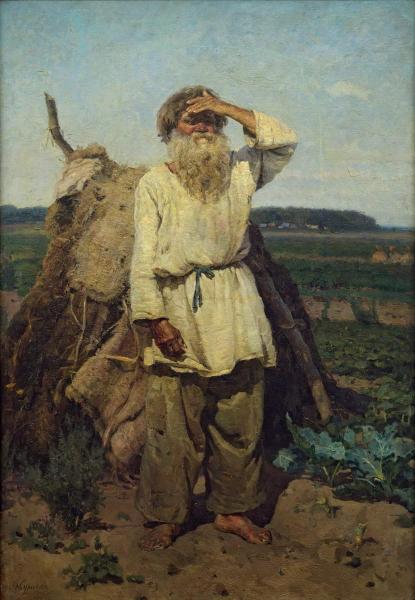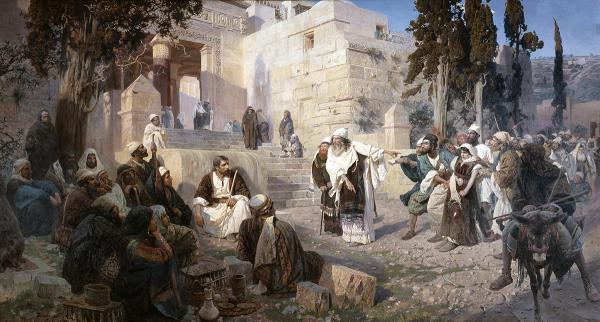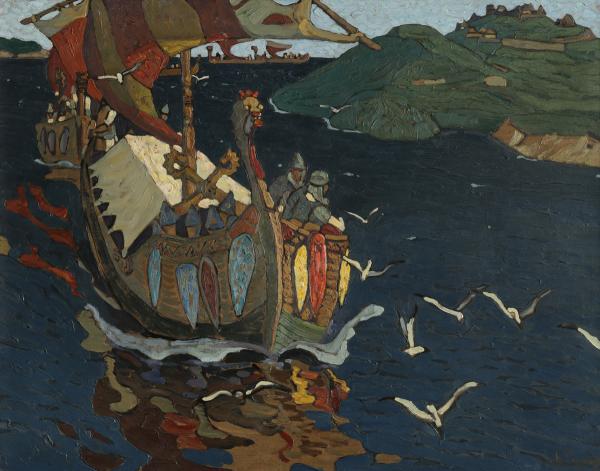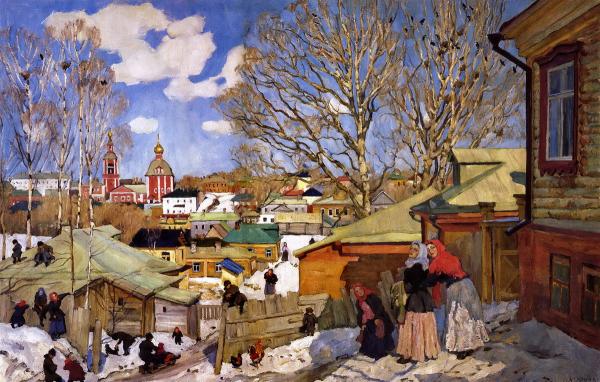The artist is Surikov

The picture is dated on the basis of a written certificate of the daughter of Surikov about. AT. Konchalovskaya: """The old man in the garden" It was written near Moscow – in a break, where Surikov lived in the summer with his family in the country: this is the period of Menshikov in 1882. Surikov himself set this picture very highly Surikov somehow lost sight of it and spoke to Konchalovsky Peter Petrovich several times: "Here is Petya, what a wonderful job "Gardener", How I would like to see it and show you!""(From a letter about. AT. Konchalovskaya in the timing on September 3, 1956. OR GRM, F. 100, unit. xp. 228).
+ About the restoration of the work
– Hide the text about restoration
The state of safety before restoration:
The picture entered the restoration for preparation for exhibiting at an exit exhibition. The tension of the canvas was very weakened, in the corners there were phalda deformations. Krakelyur on the surface was raised. In the central part around the image of the figure of the old man there was a circular broken, previously caught a breakthrough. Loss of painting along the breakthrough and in adjacent areas, primed and toned, lay mostly below the level of author’s painting. Late records were made in a free manner, with a call for author’s painting, and in order to bring the “unity” to the picturesque system, they were repeated by small strokes over the entire surface, imitating the “author’s reception”. The notes on the tone were very dark, and in picturesque shadows they reached black. Pollution recorded by varnish layers were everywhere in the texture of painting. All this violated the artistic perception and concealed the author’s submission of a picturesque image.
Complex of the events:
During the restoration process, a colorful layer was strengthened, tough deformations of the base were eliminated, and fractures were laid. On the perimeter from the back side, restoration edges were brought to the dublitsky canvas. In order to give the necessary level to the old affected loss, first cleansing of painting from numerous records and yellow varnish was performed. Podlack pollutions were removed. In some places, the old restoration soil entering the author’s painting was removed. Then, on all old losses, restoration soil was added and brought to the level of author’s painting, taking into account the texture of adjacent strokes. The whole surface was completed by the dark late records-swaps (imitators).
At the end, the picture was covered with a protective film of restoration varnish, according to which tinting with oil paints were made. After restoration, the painting was filled with light, the landscape received depth, compositional plans took their places. Flattening, rudeness and "dirt" associated with late layers have gone.
Keeping a story. Restoration workshop of the Russian Museum – 100 years. SPb, 2022. With. 130.


